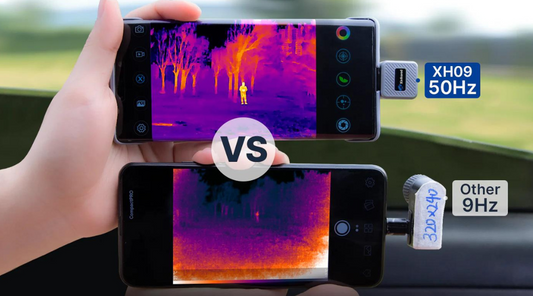Game Changers in Energy Savings: Thermal Imager
In the ever-evolving landscape of energy efficiency, technological innovations play a pivotal role in transforming challenges into opportunities. One such groundbreaking solution making waves in various industries is the Thermal Imager.
Understanding Thermal Imaging Technology
Thermal imagers work by capturing the infrared radiation emitted by objects and converting it into a visible image that highlights temperature variations. Key components, such as infrared sensors and advanced optics, enable these devices to create detailed thermal maps. This technology is not only fascinating but holds immense potential for identifying energy inefficiencies.

Benefits of Thermal Imaging for Energy Savings
Detection of Energy Leaks and Inefficiencies
Thermal imagers excel in pinpointing areas of energy loss, such as gaps in insulation or faulty seals. This early detection allows for timely repairs, preventing energy wastage and reducing utility costs.
Preventive Maintenance for Reduced Downtime
By identifying equipment anomalies through thermal imaging, businesses can implement preventive maintenance strategies. This not only minimizes downtime due to unexpected failures but also extends the lifespan of machinery, contributing to substantial energy savings.
Real-time Monitoring for Optimized Energy Consumption
Thermal imagers provide real-time insights into temperature variations, enabling businesses to adjust energy consumption on the fly. This dynamic approach ensures that energy is utilized efficiently, reducing overall consumption and costs.
Cost Savings Through Early Fault Detection
The ability to identify potential faults before they escalate translates to significant cost savings. Thermal imagers empower businesses to address issues proactively, avoiding costly repairs and replacements.

Choosing the Right Thermal Imager
Selecting the appropriate thermal imager is crucial for maximizing its benefits. Consider the following factors:
Resolution and Sensitivity
Higher resolution and sensitivity provide more detailed and accurate thermal images, aiding in precise energy analysis.
Application-Specific Features
Choose a thermal imager with features tailored to your industry and specific energy-saving goals.
Budget Considerations
While advanced models offer cutting-edge features, there are cost-effective options that provide substantial benefits for businesses with tighter budgets.

Integration into Energy Management Systems
The seamless integration of thermal imagers into existing energy management systems is key to unlocking their full potential.
Compatibility
Ensure that the chosen thermal imager is compatible with your current energy monitoring infrastructure for a streamlined integration process.
Comprehensive Energy Management
Thermal imagers complement existing systems, offering a holistic approach to energy management that covers both preventive maintenance and real-time adjustments.
Future-proofing with Scalable Solutions
Opt for thermal imagers that allow for scalability, ensuring that your energy-saving efforts can adapt to future technological advancements.

Industry Trends and Innovations
As technology continues to advance, so does thermal imaging technology. Stay ahead of the curve by keeping an eye on these trends:
Artificial Intelligence Integration
The integration of AI enhances the analytical capabilities of thermal imagers, providing more accurate predictions and actionable insights.
Miniaturization and Portability
Compact and portable thermal imagers are becoming more prevalent, allowing for increased flexibility in various applications.

Thermal imagers stand as true game-changers in the realm of energy savings. Their ability to detect inefficiencies, prevent downtime, and contribute to cost savings positions them as indispensable tools for businesses striving to enhance their energy efficiency.
As we navigate the future of energy management, embracing these innovations can lead to not only financial benefits but also a positive impact on environmental sustainability. The era of thermal imaging is here, and it's paving the way for a more energy-efficient and sustainable future.




